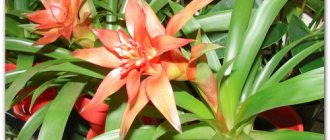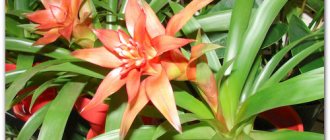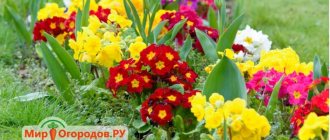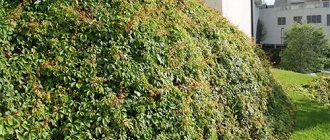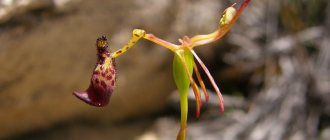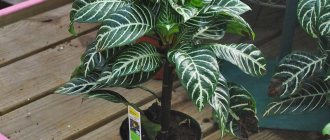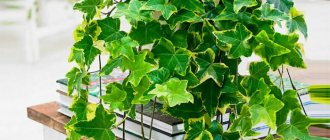An amazing plant with which you can create an exotic green corner is indoor nightshade. Its main decoration is the fruits. They give the bush a chic and elegant look. The appearance of berries among the rich greenery resembles a spruce tree decorated with bright balls. Why not give yourself such a cute flower and admire its beauty? Let's take a closer look at the exquisite berry mosaic on the window.
Brief description of cultivation
- Bloom . It starts in February or March and ends in October.
- Illumination . Needs a lot of bright light, which should be diffused.
- Temperature regime . In the spring-summer period - from 18 to 26 degrees, and in winter - from 12 to 14 degrees.
- Watering . In April–September, the soil mixture is moistened when its top layer dries out. With the onset of autumn, the frequency and abundance of watering is reduced. And in winter, they just make sure that the earthen clod does not dry out.
- Air humidity . Should be high at any time of the year. To increase humidity, the pot with the bush is placed on a deep tray filled with wet expanded clay. On hot days, the plant is moistened with a spray bottle.
- Fertilizer . From the last days of spring until the beginning of autumn, nightshade is fed 2 or 3 times a month. To do this, use a complex mineral for flowering crops in liquid form.
- Rest period . Starts in October and ends in February.
- Trimming . In spring, after the fruits have ripened and the foliage begins to yellow.
- Transplant . It is carried out annually in spring immediately after pruning.
- Soil mixture . Sod and leaf soil, peat (1:1:1).
- Reproduction . Stem cuttings and seed method.
- Pests . Aphids, whiteflies and spider mites.
- Diseases . If humidity and air temperature are excessively high, the plant may shed its leaves prematurely.
Indoor nightshade: how to properly care for and replant
Diseases and pests
Like other plants, nightshade is susceptible to disease and has its own pests. The most common pests are whiteflies and orange aphids. If you notice green larvae on the opposite side of the leaf, and the leaves begin to turn yellow, curl and fall off, it means that the plant has been infested by whitefly larvae. They suck out all the juices from the flower. At the slightest touch, a whole cloud of small midges appears above the flower.
How to fight whitefly. First you need to collect all the affected leaves. Next, we begin to spray with special chemicals that fight harmful insects (insecticides). Spraying should be carried out at least 3 times a day.
Orange aphid. Like whitefly larvae, aphids damage plant leaves. Typically, aphids settle on the underside of the leaf. They turn yellow, curl and fall off.
How to fight aphids. If you don’t have special preparations for spraying on hand, you can use a strong soap solution. The plant can be treated several times.
If the air in the apartment is very dry, then there is a risk of infection with red spider mites. If a cobweb appears on the plant, specks that grow and merge, then immediate measures need to be taken. We increase the humidity around the plant. If this does not help, then you need to spray the nightshade with acaricides.
Nightshade care at home
Illumination
At any time of the year, home nightshade needs a large amount of bright, but diffused light. A western or eastern window sill is perfect for it. The flower can also be placed on a south window, but in this case it will need shading at midday from the scorching rays of the sun. The northern window sill is not suitable for such a crop, since poor lighting can cause poor flowering, as well as slower growth and development of the bush.
Temperature
In spring and summer, the bush feels great at an air temperature of 18–26 degrees. During the winter months it is kept cool. If the room is warmer than 18 degrees, this may cause leaves and fruits to fly away. In this regard, in winter, the air temperature in the room should be 12–14 degrees.
In the summer, when it is warm outside, the plant can be moved to fresh air; a balcony or garden is suitable for this. For it, choose a place protected from precipitation and direct sunlight. In winter, the room where the nightshade is located must be systematically ventilated, but at the same time it must be protected from drafts.
Watering
During the growing season, which lasts from April to September, the plant is provided with abundant watering. It is carried out immediately after the surface of the soil mixture has dried slightly. In autumn and winter, watering is reduced: it should be more rare and meager. However, you cannot overdry the earthen lump.
Air humidity
The plant needs high air humidity all year round. It should be systematically moistened with a sprayer, and also place the container with the bush on a deep tray, which must first be filled with wet pebbles or expanded clay, while the bottom of the pot should not come into contact with the liquid. Due to low air humidity, fruiting may begin later and be weaker.
Fertilizer
Feed the crop 2 or 3 times throughout the month. In this case, fertilizing should be carried out from the last days of May until the first days of September. To feed nightshade, you can use special fertilizers for decorative flowering indoor crops or for tomatoes. It is better if the fertilizer is in liquid form. The concentration of the nutrient solution should be as recommended by the manufacturer (look on the packaging).
Trimming
Every year in spring the stems should be shortened by 1/3. As a rule, pruning is carried out after the fruits ripen and the leaf plates begin to yellow. And in order for the bush to be more lush, in autumn it is recommended to pinch its stems without flowers and buds.
Transplanting nightshade
When the spring pruning is completed, the bush should be transplanted into a new fertile soil mixture. To prevent water from stagnating in the roots of the plant, a 30 mm thick drainage layer is made at the bottom of the pot, using small pieces of brick or expanded clay.
For replanting a bush, a soil mixture consisting of leaf and turf soil, as well as peat (1:1:1) is suitable. You can also use a substrate consisting of peat and turf soil, as well as sand and humus (2:2:1:2). The transplanted bush must be watered. Its first feeding is carried out only 15 days after the procedure.
Transplanting and shaping nightshade in the BONSAI style
Properties
If the fruits of indoor nightshade are swallowed, serious poisoning can develop. In this regard, you need to be very careful if there are pets or small children in the house.
Toxicity and medicinal properties of the flower
Many people are concerned about the question: is indoor nightshade poisonous or not? Unfortunately, all parts of the plant are poisonous. Experts do not recommend growing this plant in a house where there are small children.
When choosing a nightshade variety to keep in an apartment, you need to start from how you plan to use it. If for purely decorative purposes, take the false pepper variety.
He is poisonous, but very beautiful. For medicinal purposes, pepper nightshade is chosen. It is used in the treatment of sore throat, healing of cuts and minor wounds.
In homeopathy, the plant is used to combat skin diseases, relieve ear pain, and treat rheumatism and gout.
All nightshade medicines that you decide to prepare at home must be made in accordance with the exact dosage. It is advisable to consult a doctor.
What is the appeal of indoor nightshade?
As you already understood, a houseplant with orange berries is nightshade, or solanum. Belongs to the nightshade family. Its homeland is the tropical part of South America.
There are various rumors about him. Some flora lovers are afraid to keep it at home. It turns out that the bright berries for which the flower is valued have poisonous properties. The fruits should not be eaten. Be careful if there are small children in the house. Place the plant on high, inaccessible shelves and cabinets, or avoid the flower altogether.
Nightshade does not produce any toxic fumes. If he just stands indoors, he won't cause any harm.
Nightshade is a small evergreen shrub. The leaves are shiny, oblong in shape. The fruits are large, similar to cherries, and have a fiery orange color.
A houseplant with orange berries, a photo of which will prove its beauty, will, with proper care, delight you with its ovaries and flowers. All this creates a beautiful picture. Therefore, nightshade is an excellent room decoration and addition to the interior.
Reproduction methods
Cuttings
Stem cuttings are used to propagate indoor nightshade. After the plant is pruned in the spring, the remaining pieces are not thrown away. Select the most powerful and completely healthy sections and plant them for rooting. To do this, you can use a mixture of peat and sand, or vermiculite, or just sand.
When the cutting takes root, it is planted in a permanent individual pot, which is filled with an earth mixture consisting of sand, turf and humus soil (1: 1: 2). Don't forget to make a drainage layer at the bottom of the container. Pinch the tops of the stems of the transplanted bush to enhance its branching. During the summer period, you can make several light prunings, which will also help stimulate the plant to tiller.
Pruning and propagation of nightshade. Results after six months
Growing from seeds
To propagate nightshade, the seed method is also used. Start by filling a small container with sifted leaf soil. Distribute the seed material evenly over the surface of the substrate. Cover the seeds with a thin layer of sand. The crops are slightly moistened with a spray bottle, covered with glass or film on top and transferred to a place where it is always warm (about 22 degrees).
The first seedlings should appear after about 15 days. As the seedlings grow and develop, they will need 2 picks. Then the bushes are transplanted into a soil mixture of turf and humus soil, as well as sand (1:2:1). Next, they are cared for in the same way as rooted cuttings (see above).
Benefits and harms
Attention! Under no circumstances should you try the berries.
The berries of false pepper nightshade contain the alkaloid solanine , which, if ingested, causes poisoning .
Even despite the content of toxic substances, nightshade juice is used in folk medicine in South Africa and India. It is used to treat boils, drowsiness and relieve cutting pain.
Possible problems
A gardener may encounter the following problems with indoor nightshade:
- Does not form fruit. A plant indoors may require artificial pollination. To do this, it is recommended to take a brush with soft bristles and use it to transfer pollen from one flower to another.
- Flight of leaves and fruits . Most often this is due to the fact that the room is too hot and the air humidity is very high.
- Pests . Aphids, whiteflies or spider mites may settle on the plant. The most often affected are those bushes that are located in a room with too low air humidity.
general information
False pepper nightshade is a perennial evergreen plant that belongs to the nightshade family. The stems branch and become woody over time; the plant can grow up to 50 cm in height.
The leaves are medium-sized, oblong, glossy, arranged in pairs and densely on the branches. The flowers are formed small, shaped like stars, the petals are painted white.
Photo of nightshade
After flowering, round fruits are formed that look like cherries. As they mature, their color changes from pale orange to red.
Types of nightshade with photos and names
Jasmine nightshade (Solanum jasminoides)
This species is native to Brazil. It is represented by evergreen shrubs that have thin, climbing stems without pubescence. Their length can reach up to 400 cm. The tops of the stems are decorated with elongated, ovoid, whole-edged simple leaf plates, the surface of which is without pubescence. In the lower part of the stems, glossy trifoliate foliage most often grows, the width of which is about 30 mm and the length is up to 70 mm.
As a rule, quite lush flowering is observed from early March to mid-October. The bluish flowers reach about 20 mm in diameter, and they are collected in apical paniculate inflorescences. The deep red fruits have a diameter of about 15 mm.
Giant nightshade (Solanum giganteum)
The species is represented by a branching evergreen shrub, the height of which can reach up to 6 meters. The surface of the thick branches is covered with pubescence in the form of whitish hairs, as well as short thorns. On the shoots there are elongated oval dark green leaf plates, the length of which is about 25 cm. On the underside of the foliage there is pubescence, represented by white hairs.
The bush blooms from mid-July to the end of August. Corymbose apical inflorescences are formed on the plant, consisting of hanging dark purple flowers that are relatively small in size. The species is rare in home culture; most often it can be seen in greenhouses.
Seaforth's nightshade (Solanum seaforthianum)
The species is represented by a highly decorative evergreen shrub, the height of which is about 5–6 meters. Its climbing stems are decorated with lanceolate, less often ovate-lanceolate leaf blades. They are odd-pinnate, entire and slightly wavy. The bush blooms from early March until mid-to-late autumn. The axillary panicle inflorescences consist of pendulous pale lilac flowers. The ovoid berries are red-orange in color.
Wendland nightshade (Solanum wendlandii)
In nature, the species is found in the mountainous regions of Central America at an altitude of 2000 to 3000 meters. It is represented by evergreen branching shrubs, the height of which is about 4 meters. The surface of the climbing branches is covered with short thorns. In the upper part of the stems, the foliage is oblong-elliptical, and its length is about 10 centimeters. At the bottom of the branches there is three-lobed foliage of a dark green hue, the width of which is about 10 centimeters and the length is up to 25 centimeters.
Blooms in the summer months. Apical corymbose panicles form on the bush. Densely growing purple flowers reach 50 to 60 mm in diameter. The color of the fruit is deep purple.
Nightshade (Solanum crispum)
This decorative flowering species is characterized by fast growth and climbing stems. Blue-purple flowers are collected in apical corymbs.
Nightshade (Solanum pseudocapsicum)
The species is represented by a non-deciduous subshrub, the height of which is about 50 cm. The branching stems are decorated with dark green elongated lanceolate leaf plates.
With optimal care, the bush blooms and bears fruit all year round. Single small flowers are painted white. Externally, the fruits are similar to cherries. Their color depends on the degree of ripening and can vary from green to deep red. The berries are very bitter and should not be eaten.
Pepper nightshade (Solanum capsicastrum)
The species is also popularly called “Jerusalem cherry.” An evergreen low-growing subshrub can reach a little more than half a meter in height. The elongated, lanceolate, bluish-green leaf blades have a wavy edge and vary in size.
The bush blooms from June to August. Single small flowers are painted white. The red fruits reach about 20 mm in diameter and contain poison.
Nightshade Pepper (Cuban Cherry) Unpretentious Plants for Beginners
About indoor nightshade
Mostly peppered nightshade and false pepper nightshade are grown. Popularly, this plant got its own name. You can hear - Jerusalem Star, Coral Bush. Like pepper, it comes from Brazil, but grows naturally in almost all tropical zones, including Crimea.
Despite the similarity of the mentioned nightshade species, they are easily distinguished. To distinguish peppery Nightshade from False Pepper Nightshade, you need to look at the shoots of the plant. In false pepper nightshade they have a light gray edge, while in pepper nightshade the shoots are smooth, without edge. They also differ in the size of the leaves and fruits. In pepper nightshade they are smaller. But the most important difference between these species is not external, but in the fact that pepper nightshade can be eaten and it even belongs to medicinal plants. True, the taste of the fruits of this plant is somewhat specific, and having tried them once, you are unlikely to want to repeat them. False pepper nightshade is not only inedible, but also poisonous.
Note! If there is even the slightest doubt about the correctness of the species identification, do not risk tasting it. Keep nightshade away from children. Bright, beautiful fruits will easily provoke a desire to taste them. It won't give them any pleasure. Although there will not be very serious consequences, an upset stomach will be guaranteed.
The decorativeness of nightshade is beyond praise. And given that its peak occurs mainly in winter, on the eve of the New Year, it becomes no less popular than luxurious poinsettia or cyclamen.
Basic rules of care
The plant tolerates bush formation well, which is carried out after fruiting. First, trim the top of the main trunk to stimulate the growth of side shoots. Then the tops of their heads are pinched. The branches are shortened by a third of the length. Thanks to this procedure, the shrub retains its decorative appearance. By the end of winter, nightshade leaves turn yellow and fall off. Pruning improves its condition.
An adult plant is replanted every year. The procedure is carried out in early spring before the beginning of the growing season - after the bush is pruned. The soil mixture must be loose so that air can penetrate well. The flower is not picky about the soil, but prefers clay or alkaline loamy soils.
You can buy the substrate at a store for flowering plants or prepare it yourself. To do this, mix one part of turf soil, humus and sand with two parts of peat. Or use greenhouse or garden soil with the addition of ash, sand, sawdust or humus.
At the bottom of the pot, be sure to arrange a drainage layer of expanded clay or other material 3 cm thick so that excess moisture does not stagnate. Then fill one third with substrate. The roots of the bush are shortened and transplanted into new soil. After planting, it is watered. Fertilizers are applied after two weeks. Since nightshade is not long-lived, many gardeners prefer not to touch the shrub, but to root cuttings.
Growing solanum from seeds
Solanum pseudocapsicum seeds photo
- Start sowing solanum seeds at the end of February.
- Prepare the substrate from 1 part humus or peat and 2 parts turf soil; you can take a universal soil mixture for growing tomato or eggplant seedlings.
- Fill a wide container with prepared soil and moisten it.
- The seed placement depth is 0.5 cm.
- To create a greenhouse effect, cover the top of the crops with glass or film.
- Raise the shelter daily for ventilation.
- Provide diffused lighting.
- Maintain the temperature within 22-25 °C, bottom heating is favorable.
- Moisten the soil as needed by spraying with a fine mist.
- Under these conditions, sprouts will appear in 3-4 weeks. Then the cover can be removed.
- When a pair of true leaves appear, plant the young plants in separate containers.
Plant propagation and planting
Houseplant propagation can be done by seeds and cuttings:
- When planting seeds, leaf soil is most suitable, on the surface of which the seed is laid out at a distance of 2 cm from each other and sprinkled with sand. The container is placed in a warm place for germination, creating greenhouse conditions using a film cover. Within 10 days, the seeds will sprout. In the first stages, the borings grow very intensively and therefore they need to be picked, and this procedure is carried out twice. This is necessary to give the future bush a compact spherical shape. After the second picking, the plant can be planted in the ground.
- The process of propagation using cuttings is a faster process. Cut branches are used as cuttings. It is easiest to root cuttings in a sand-peat mixture, and when a sufficient number of roots have formed, transplant the plant into suitable soil. With proper care, flowering and fruiting are possible in young flowers.
The method of propagation affects the development of nightshade and the size of its berries. When propagated by seeds, the plant grows longer, but is stronger and actively bears fruit. When cuttings, nightshade requires time to adapt and the fruits of the first are small and the flowering is sparse.
The optimal soil for nightshade is a mixture of peat and clay soil in a ratio of 1:3 with the addition of a small amount of sand. It is necessary to place expanded clay or crushed stone drainage at the bottom of the planting container; small brick fragments are also suitable.

